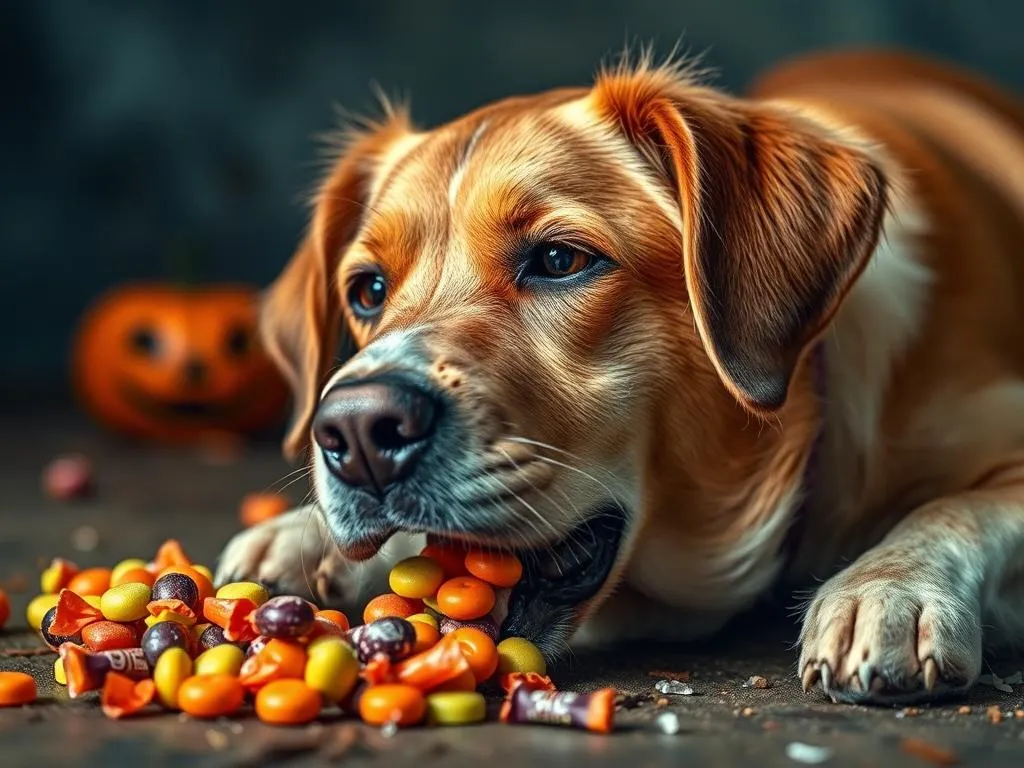
Introduction
Halloween is a time for fun, costumes, and, of course, candy. From chocolate bars to gummy treats, the season is filled with sugary delights that many people look forward to. However, when it comes to our canine friends, the festive season can pose significant health risks. It’s essential to prioritize dog health care during these times, especially considering the dangers that Halloween candy can present.
Many dog owners have faced the alarming situation of discovering that their beloved pet has snacked on some Halloween candy. The consequences can range from mild to severe, depending on the type and quantity of candy ingested. This article aims to provide comprehensive guidance on what to do if your dog eats Halloween candy, ensuring that you are well-prepared to handle this potential emergency.
Understanding the Risks of Halloween Candy for Dogs
Common Ingredients in Halloween Candy
Candies come in various shapes and flavors, but some common ingredients are particularly harmful to dogs.
-
Chocolate: Chocolate is one of the most toxic ingredients for dogs. It contains theobromine and caffeine, which can be fatal in certain amounts. Dark chocolate and baking chocolate are especially dangerous because they contain higher concentrations of these compounds. Even small amounts of milk chocolate can lead to toxicity, particularly in smaller dogs.
-
Xylitol: This artificial sweetener is often found in sugar-free candies and gum. Even in small quantities, xylitol can cause a rapid insulin release, leading to hypoglycemia (low blood sugar), seizures, and liver failure.
-
Other Harmful Ingredients: Some candies may contain raisins, which can cause kidney failure in dogs, or nuts like macadamias, which are toxic to them. Additionally, many candies have artificial colors and flavors that can upset a dog’s stomach.
Symptoms of Candy Ingestion
If your dog consumes Halloween candy, it’s crucial to be aware of the symptoms that may arise:
- Common Symptoms:
- Vomiting
- Diarrhea
- Lethargy
-
Agitation
-
Severe Symptoms:
- Seizures
- Tremors
- Heart rate irregularities
- Life-threatening conditions
Recognizing these symptoms early can be vital in ensuring your dog receives the necessary care.
Immediate Actions to Take
Stay Calm
The first step when you realize “my dog ate Halloween candy” is to remain calm. Dogs can sense anxiety, and panicking may lead to further stress for you and your pet.
Assess the Situation
Determine the type of candy your dog consumed. Was it chocolate, something sugar-free, or another type? Also, try to estimate how much was eaten. This information will be crucial when consulting with a veterinarian.
Contact Your Veterinarian
If you suspect that your dog has ingested something harmful, it’s essential to contact your veterinarian immediately. You should call if:
- You know the candy contains chocolate or xylitol.
- Your dog is showing any symptoms of distress.
- You’re unsure about the potential risks.
When you call, be ready to provide essential details such as your dog’s size, the type of candy consumed, and the amount ingested.
Follow Veterinarian’s Advice
Your veterinarian may recommend various actions based on the situation. They might advise inducing vomiting, bringing your dog in for an examination, or monitoring them closely at home. Always follow their instructions closely.
Home Remedies and First Aid
Inducing Vomiting Safely
In some cases, inducing vomiting can prevent further absorption of toxins. However, this should only be done under veterinary guidance. If advised, common methods include:
- Hydrogen Peroxide: A veterinarian may recommend administering a specific dosage of hydrogen peroxide to induce vomiting. Never attempt to induce vomiting without professional advice, as this can sometimes cause more harm than good.
Monitoring Your Dog
After the incident, keep a close watch on your dog for the next few hours or days. Some symptoms may not appear immediately. It’s helpful to maintain a log of any changes in behavior, appetite, or physical condition.
Hydration and Diet Adjustments
Ensure your dog remains hydrated, especially if they are experiencing gastrointestinal upset. If your dog shows signs of digestive issues, a bland diet consisting of boiled chicken and rice can help soothe their stomach. However, consult your veterinarian before making any dietary changes.
Preventive Measures for the Future
Dog-proofing Your Home During Halloween
To prevent future incidents, consider the following tips for dog-proofing your home during Halloween:
- Keep candy out of reach: Store sweets in high cabinets or locked containers.
- Educate family and friends: Make sure everyone understands the dangers of feeding dogs human food, particularly Halloween candy.
Alternative Treats for Dogs
Instead of sharing Halloween candy, opt for safe, dog-friendly treats. Consider:
- Pumpkin-flavored treats: Many dogs love pumpkin, which is safe and nutritious.
- Homemade treats: Create your own dog treats using simple ingredients like peanut butter and oats.
Training and Behavioral Strategies
Teaching your dog commands such as “leave it” can prevent them from scavenging for unwanted food. Reinforce positive behavior with treats and praise when they obey.
Understanding Canine Toxicity
Toxicity Levels of Common Foods
It’s essential to familiarize yourself with foods that are toxic to dogs. Some common foods to avoid include:
- Chocolate
- Grapes and raisins
- Onions and garlic
- Xylitol
Resources such as the ASPCA’s Animal Poison Control Center can provide valuable information regarding toxic substances.
Long-term Effects of Ingestion
Repeated exposure to toxic foods can have long-term health implications for dogs. Even if a dog seems fine after a single incident, it’s crucial to monitor their health closely over time. Regular vet check-ups can help catch any underlying issues early.
Conclusion
Dealing with the aftermath of “my dog ate Halloween candy” can be stressful, but being informed and prepared can make all the difference. By understanding the risks, knowing how to respond, and taking preventive measures, you can ensure your furry friend stays safe during the festive season. Staying informed about dog health care is a vital part of responsible pet ownership, especially during times when temptations abound. Remember, a little knowledge goes a long way in keeping our pets healthy and happy.









